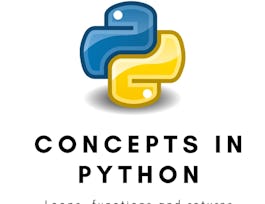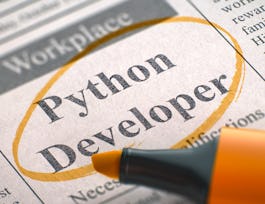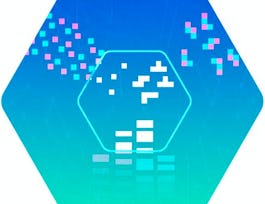This course gives you a thorough introduction to the python programming language. You'll start by learning the definition of python, its history, semantics, and how it works. The first week concludes by writing a python script to solve a problem. In Week 2, you'll learn about Serverless Architectures and understand the differences between microservices, service-oriented and monolith architectures. You'll build a microservices architecture by learning how to use the following tools: AWS Lambda, Amazon API Gateway, and Cloud9. It's then time to go deep with AWS Databases. You'll see Amazon RDS and Amazon DynamoDB in action, visualizing the important role they play in developing applications in python. The course's final week will cover application integration services. Amazon's Simple Notification Service (SQS), Simple Queue Service (SQS), and EventBridge take center stage as important “glue” components for scalable, cloud-based applications. You'll close the course with a hands-on project, writing some code to use some hardcoded data to write to dynamodb and then convert that into a lambda function.


Python for Serverless Applications and Automation on AWS
This course is part of AWS Cloud Support Associate Professional Certificate


Instructors: Morgan Willis
Sponsored by RIA PAYMENT INSTITUTION
What you'll learn
Introductory level Python programming and Python packages
Explain the different roles in an organization building software
Skills you'll gain
- Cloud Infrastructure
- Cloud Platforms
- Cloud Applications
- NoSQL
- Computer Programming
- Cloud Solutions
- API Gateway
- Amazon Web Services
- Serverless Computing
- Amazon DynamoDB
- Databases
- Cloud-Based Integration
- IT Automation
- Cloud Services
- Software Development
- Multi-Cloud
- Cloud Development
- Python Programming
- Data Engineering
- Application Programming Interface (API)
Details to know

Add to your LinkedIn profile
7 assignments
July 2024
See how employees at top companies are mastering in-demand skills

Build your Cloud Computing expertise
- Learn new concepts from industry experts
- Gain a foundational understanding of a subject or tool
- Develop job-relevant skills with hands-on projects
- Earn a shareable career certificate from Amazon Web Services


Earn a career certificate
Add this credential to your LinkedIn profile, resume, or CV
Share it on social media and in your performance review

There are 4 modules in this course
This module starts with how to develop applications in a team. An application engineer doesn’t work alone, and you learn how an engineer interacts with roles such as architects, product managers, quality assurance (QA), support, and DevOps teams. Next, you learn the basics of Python programming. The goal is to get you to the level where you can read and understand some basic Python code. If you already know a programming language, many of the features of Python will look similar to the programming languages you already know.
What's included
12 videos10 readings2 assignments2 plugins
This module focuses on software architecture. You learn about AWS Lambda as a home for your application code. You also investigate three different types of application architecture: microservices architecture, monolithic architecture, and service-oriented architecture. You walk through a conceptual ecommerce application, and compare how to build an application based on each architecture type. Next, you learn how to expose your application logic as an application programming interface (API). In a lab environment, you deploy a Lambda function and an Amazon API Gateway API by using the AWS Serverless Application Model (AWS SAM).
What's included
7 videos2 readings1 assignment1 app item
In this module, you learn about using a database for your application data. You explore both relational databases with Amazon Relational Database service (Amazon RDS), and NoSQL databases with Amazon DynamoDB. You learn about the differences between relational databases and NoSQL databases, and when you would choose one type of database instead of the other. You also explore different examples of how to access relational databases and DynamoDB from a Python application.
What's included
6 videos1 reading1 assignment1 app item
This module introduces you to the idea of using python for automating tasks related to IT support and operations. It’s common to automate repeatable tasks with python scripts, and you’ll explore specific scenarios for automation with python as well as hosting automation scripts using AWS services like AWS Systems Manager. You will see an example of creating an AWS Lambda function hosting a python script that will be used in an AWS Systems Manager Automation runbook. This module will give you a better idea of how to use python to automate tasks and processes.
What's included
7 videos3 readings3 assignments2 app items1 plugin
Offered by
Why people choose Coursera for their career




Recommended if you're interested in Information Technology

Coursera Project Network

Rice University

Open new doors with Coursera Plus
Unlimited access to 10,000+ world-class courses, hands-on projects, and job-ready certificate programs - all included in your subscription
Advance your career with an online degree
Earn a degree from world-class universities - 100% online
Join over 3,400 global companies that choose Coursera for Business
Upskill your employees to excel in the digital economy

